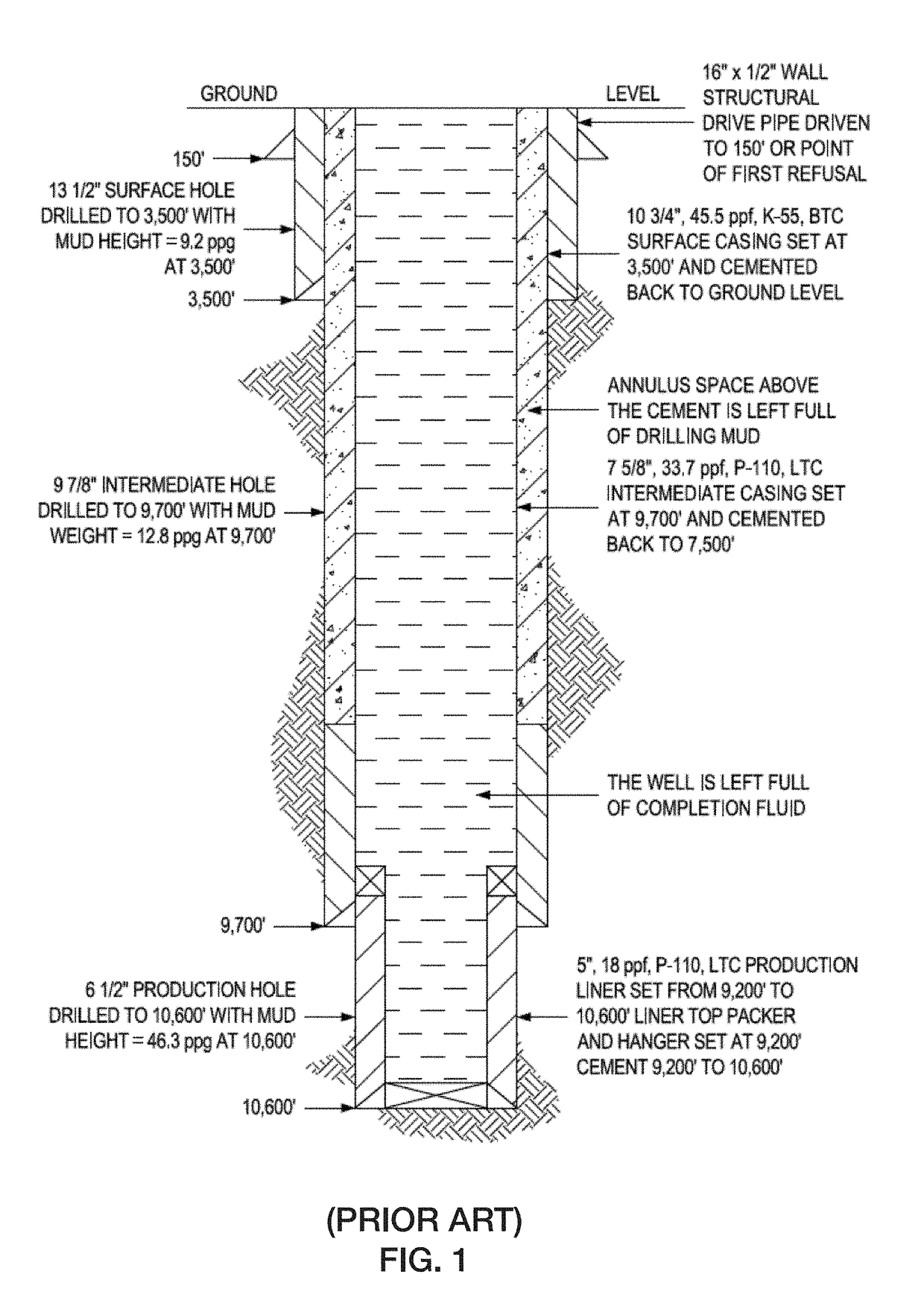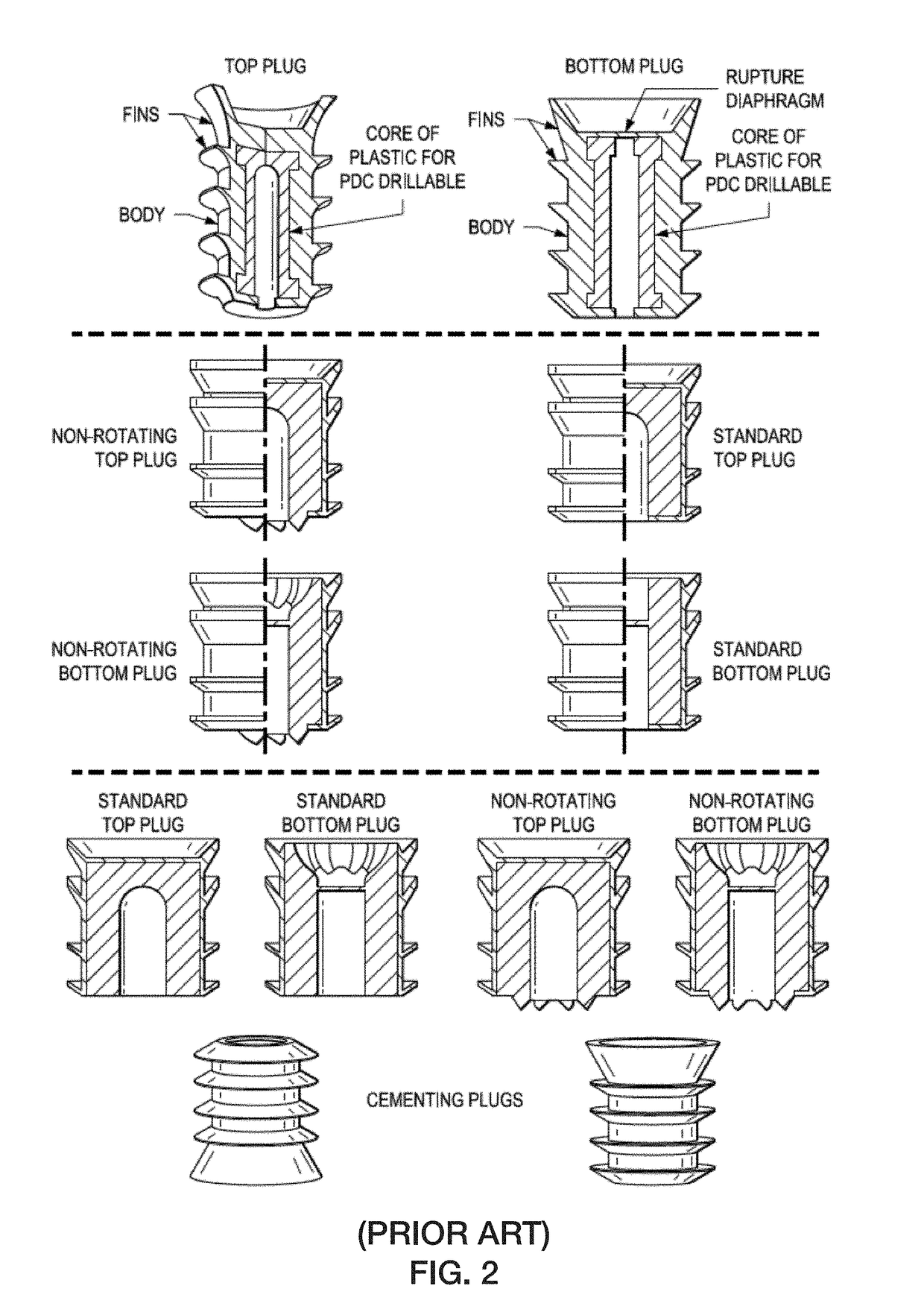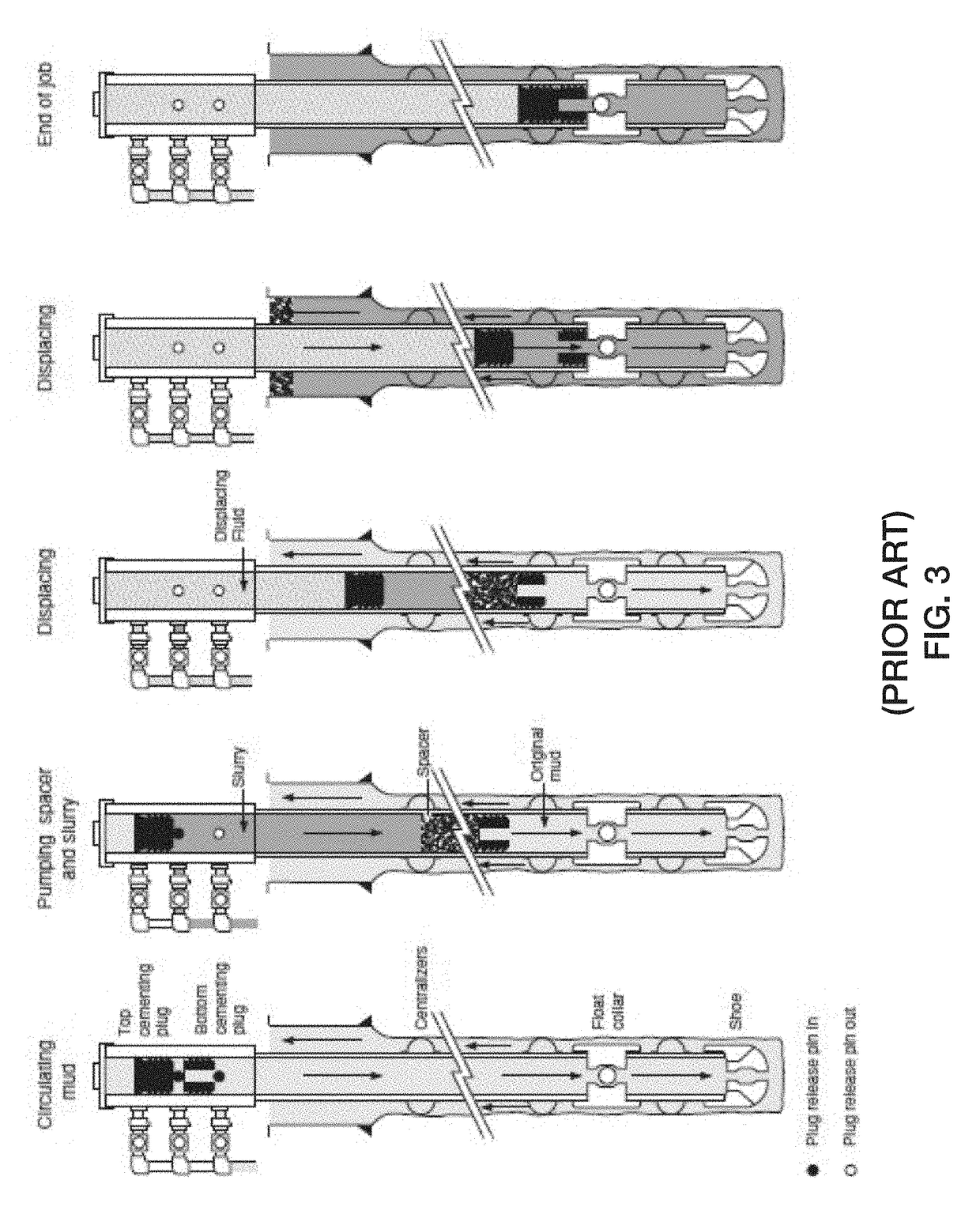Delayed fin deployment wiper plug
a technology of wiper plugs and delayed fins, which is applied in the direction of sealing/packing, earthwork drilling and mining, and well accessories, etc., can solve problems such as event failure, and achieve the effect of preventing contamination
- Summary
- Abstract
- Description
- Claims
- Application Information
AI Technical Summary
Benefits of technology
Problems solved by technology
Method used
Image
Examples
Embodiment Construction
[0038]The disclosure provides novel wiper plugs with a second (or more) set(s) of wiper fins that are deployable on command. Generally speaking, the wiper plug has a piston that can be activated to raise a sleeve, under which are housed one or more additional fin sets. When the piston is activated, it lifts, raising the sleeve and exposing the fins that were previously hidden inside the sleeve.
[0039]The piston can be activated in any suitable manner, and one common means would be to allow changing pressure to raise the sleeve, e.g., by shearing shear pins, screws, bolts and the like, or by overcoming the holding pressure of a spring clip, or other equivalent device. Other activation methods include timer activated, airbag activated, dissolvable retainer, deterioration of a retaining ring, deterioration of retaining wiper fins, and the like.
[0040]The invention includes any one or more of the following embodiment(s), in any combination(s) thereof:
[0041]In at least one embodiment, a de...
PUM
 Login to View More
Login to View More Abstract
Description
Claims
Application Information
 Login to View More
Login to View More - R&D
- Intellectual Property
- Life Sciences
- Materials
- Tech Scout
- Unparalleled Data Quality
- Higher Quality Content
- 60% Fewer Hallucinations
Browse by: Latest US Patents, China's latest patents, Technical Efficacy Thesaurus, Application Domain, Technology Topic, Popular Technical Reports.
© 2025 PatSnap. All rights reserved.Legal|Privacy policy|Modern Slavery Act Transparency Statement|Sitemap|About US| Contact US: help@patsnap.com



